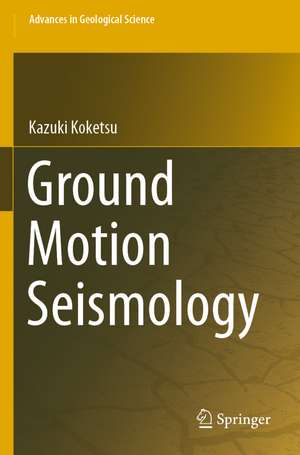Ground Motion Seismology: Advances in Geological Science
Autor Kazuki Koketsuen Limba Engleză Paperback – 6 ian 2022
| Toate formatele și edițiile | Preț | Express |
|---|---|---|
| Paperback (1) | 457.24 lei 6-8 săpt. | |
| Springer Nature Singapore – 6 ian 2022 | 457.24 lei 6-8 săpt. | |
| Hardback (1) | 592.61 lei 6-8 săpt. | |
| Springer Nature Singapore – 5 ian 2021 | 592.61 lei 6-8 săpt. |
Preț: 457.24 lei
Nou
Puncte Express: 686
Preț estimativ în valută:
87.50€ • 91.02$ • 72.24£
87.50€ • 91.02$ • 72.24£
Carte tipărită la comandă
Livrare economică 14-28 aprilie
Preluare comenzi: 021 569.72.76
Specificații
ISBN-13: 9789811585722
ISBN-10: 9811585725
Pagini: 332
Ilustrații: IX, 332 p. 114 illus.
Dimensiuni: 155 x 235 mm
Greutate: 0.48 kg
Ediția:1st ed. 2021
Editura: Springer Nature Singapore
Colecția Springer
Seria Advances in Geological Science
Locul publicării:Singapore, Singapore
ISBN-10: 9811585725
Pagini: 332
Ilustrații: IX, 332 p. 114 illus.
Dimensiuni: 155 x 235 mm
Greutate: 0.48 kg
Ediția:1st ed. 2021
Editura: Springer Nature Singapore
Colecția Springer
Seria Advances in Geological Science
Locul publicării:Singapore, Singapore
Cuprins
Earthquakes and Ground Motion.- The Effect of Earthquake Source.- The Effect of Propagation.- Observation and Processing.
Notă biografică
Kazuki Koketsu is a professor of applied seismology at the Earthquake Research Institute, The University of Tokyo, where he received his M.Sc. and Ph.D. in geophysics. He has held the positions of research associate and associate professor at the Earthquake Research Institute, The University of Tokyo, and visiting fellow at the Research School of Earth Sciences of the Australian National University. His selected papers include Koketsu, K. and M. Kikuchi, Propagation of seismic ground motion in the Kanto basin, Japan, Science 288, 1237–1239 (2000); Yokota, Y. and K. Koketsu, A very long-term transient event preceding the 2011 Tohoku earthquake, Nature Communications 6, doi:10.1038/ncomms6934 (2015); and Koketsu, K. et al., Widespread ground motion distribution caused by rupture directivity during the 2015 Gorkha, Nepal, earthquake, Scientific Reports 6, doi:10.1038/srep28536 (2016).
He is a member of the Subcommittee for Evaluations of Strong Ground Motions, Ministry of Education, Culture, Sports, Science and Technology of Japan; the Committee of Earthquake Insurance, Ministry of Finance of Japan; a representative of the Seismological Society of Japan; and the recipient of the 2016 Paper Award of the Japan Association for Earthquake Engineering. He was an associate editor of the Journal of Seismology (Springer) between 2005 and 2012.
He is a member of the Subcommittee for Evaluations of Strong Ground Motions, Ministry of Education, Culture, Sports, Science and Technology of Japan; the Committee of Earthquake Insurance, Ministry of Finance of Japan; a representative of the Seismological Society of Japan; and the recipient of the 2016 Paper Award of the Japan Association for Earthquake Engineering. He was an associate editor of the Journal of Seismology (Springer) between 2005 and 2012.
Textul de pe ultima copertă
This book explains the physics behind seismic ground motions and seismic waves to graduate and upper undergraduate students as well as to professionals. Both seismic ground motions and seismic waves are terms for “shaking” due to earthquakes, but it is common that shaking in the near-field of an earthquake source is called seismic ground motion and in the far-field is called seismic waves. Seismic ground motion is often described by the tensor formula based on the representation theorem, but in this book explicit formulation is emphasized beginning with Augustus Edward Hough Love (1863 – 1940). The book also explains in depth the equations and methods used for analysis and computation of shaking close to an earthquake source. In addition, it provides in detail information and knowledge related to teleseismic body waves, which are frequently used in the analysis of the source of an earthquake.
Caracteristici
Explains equations and methods in a way that readers themselves can derive them Emphasizes explicit formulation beginning with Augustus Edward Hough Love Allows readers to easily capture the geometrical image of seismic ground motion









